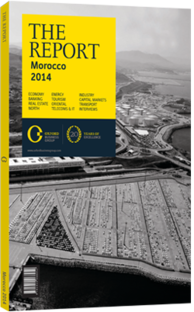Changes ahead: Reforms will gradually subject the sector to corporate and income tax
As a direct result of the global slowdown, regional unrest and weaker demand in the EU, Morocco’s budget deficit widened to 7.7% in 2012, its highest level since 1990. This can largely be seen as a result of falling foreign direct investment and exports, as well as increased social spending over the past few years. In grappling with this deficit, the government is looking to boost tax revenues in order to sustainably widen the country’s fiscal base and redress its imbalances through new taxes on the one hand and subsidy cuts on the other. To this end, measures introduced in the 2014 Finance Law include the removal of subsidies on petrol and fuel oil as well as the tax exemption on large-scale farms.
GRADUAL INCREASE: Historically, upstream activities in agriculture have benefitted from generous tax exemptions in Morocco. However, the new tax reforms introduced in the 2014 Finance Law will gradually subject the sector to corporate and income tax. Therefore, as of January 2014, agricultural businesses with turnover equal to or in excess of Dh35m (€3.1m) will be taxed; this will be followed in January 2016 by those at or above Dh20m (€1.8m); and will finally include, in January 2018, those with turnovers of Dh10m (€888,000) or more. The aim is to have all businesses with turnover in excess of Dh5m (€444,000) pay taxes by 2020.
With some 70% of Moroccan farmers operating on surface areas of less than 5 ha, and tax exemptions maintained for small and medium-sized farms, these new measures will mainly target large-scale commercial producers.
“Sector professionals have long defended tax exemptions in agriculture, particularly in the face of price volatility related to demand and supply, and especially in a country like Morocco, which continues to import goods to meet its food needs,” Ahmed Darrab, the secretary-general of the Moroccan Association of Citrus Producers, told OBG. “However, Moroccan agriculture has evolved and important investments have been made particularly under the Green Morocco Plan (Plan Maroc Vert, PMV) and therefore it is totally normal for major agricultural investors to start contributing to state coffers.”
The 2014 draft budget also proposes reforming the value-added tax (VAT) system in a bid to align and reduce the number of VAT rates to two instead of the previous three. Therefore, starting from January 2014, products previously subjected to VAT at a rate of 7%, such as animal feed, will be taxed at 10%, whilst products subjected to VAT at 10%, like salt and milled rice, and 14%, such as margarine, will be subject to a new 20% VAT rate.
EXPECTED IMPACT: Not every segment has seen a rise. Due to pressure from those involved in the seafood processing industry, VAT on canned sardines has been left at 7%. According to Nathalie Barbe, the director of the National Federation of Agribusiness, the increases in VAT applied to processed agricultural goods under the 2014 Finance Law are likely to affect levels of consumption.
VAT will also apply to equipment, notably for the fishing industry, with local purchases or imports of fishing nets and engines subject to VAT at the 20% rate as of January 2014. A 10% rate will also apply to some types of equipment used in agriculture, notably combine-harvesters and crop dusters.
Overall, these fiscal reforms seem so far to have been well received. Crucially, the changes take into account the idiosyncrasies of the agricultural sector, which remains vulnerable to exogenous shocks and grapples with seasonal cycles, which affect payroll taxes, for example. With corporate tax receipts accounting for a significant amount of the government’s overall tax revenues, these reforms should allow it to enlarge the tax base by including new actors from the agricultural sector.
With these new measures in place, the government expects to see its budget deficit fall from 5.4% of GDP, or Dh74bn (€6.6bn), in 2013 to 4.9% in 2014.
You have reached the limit of premium articles you can view for free.
Choose from the options below to purchase print or digital editions of our Reports. You can also purchase a website subscription giving you unlimited access to all of our Reports online for 12 months.
If you have already purchased this Report or have a website subscription, please login to continue.

